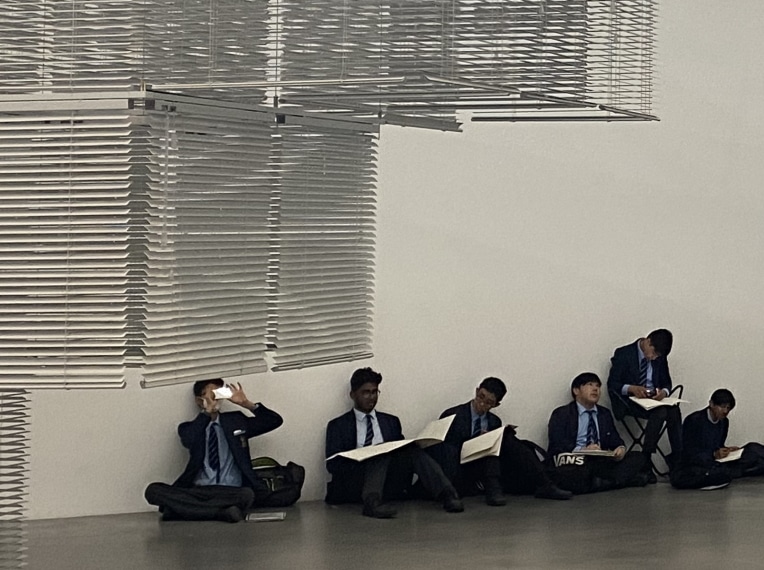
Twenty Year 10 GCSE Art students seized the opportunity to study at first-hand the work of leading British artist Dame Phyllida Barlow – a key figure in their current lessons.
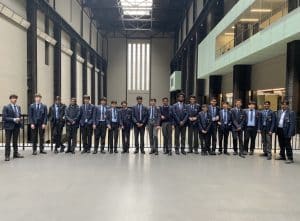 The boys, who have spent the term using her Bad Copies series as a starting point to develop their painting and drawing skills, headed straight to the rooms in Tate Modern’s Materials and Objects collection dedicated to her work.
The boys, who have spent the term using her Bad Copies series as a starting point to develop their painting and drawing skills, headed straight to the rooms in Tate Modern’s Materials and Objects collection dedicated to her work.
Head of Art Craig Wheatley explained why her paintings and drawings are so influential: “Barlow’s drawings are often derived from her environment, but never drawn from life; they range from swift biro and pencil sketches in notebooks and diaries to more heavily worked acrylic drawings and oil paintings, which experiment with surface textures as well as colours, forms and arrangements.”
The boys also enjoyed finding out about aspects of her oeuvre that were less familiar to them: “After responding to Barlow’s paintings and drawings, the natural progression was to explore and respond to her three-dimensional work.”
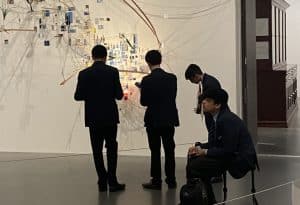 During the visit, the boys took time to analyse and record their observations in the form of written annotation and observational drawing. Guided by teaching staff, they were challenged to contemplate the meaning of the works on display and the artist’s intention, giving both objective analysis and subjective opinion.
During the visit, the boys took time to analyse and record their observations in the form of written annotation and observational drawing. Guided by teaching staff, they were challenged to contemplate the meaning of the works on display and the artist’s intention, giving both objective analysis and subjective opinion.
There was also time for them to explore the gallery space independently, so that they could make comparisons between different genres.
“It was a productive day: starting at St Paul’s Cathedral, we walked across the Millennium Bridge photographing the ever-evolving landscape, before enjoying a great time at Tate Modern – the first visit for a majority of the boys,” said Mr Wheatley.
“They enjoyed the opportunity to see artwork first-hand and to be inspired. Having their appreciation and understanding challenged is significant in ensuring that pupils’ own work continues to develop and become more sophisticated.
 “Furthermore, the visit developed their ability in out-of-classroom research and in generating independent ideas. Those are transferrable skills that the boys will be able to apply across their current and future curriculum.”
“Furthermore, the visit developed their ability in out-of-classroom research and in generating independent ideas. Those are transferrable skills that the boys will be able to apply across their current and future curriculum.”
Born in 1944, Barlow taught for 40 years and in 2004 was appointed Professor of Fine Art and Director of Undergraduate Studies at Slade School of Art before retiring from teaching in 2009.
Her break as an artist came late: it was in 2010 when she was shown at the Serpentine Galleries. Solo exhibitions around the world followed, and in 2017 she represented Great Britain at the Venice Biennale.
She has had an important influence on younger artists, including Rachel Whiteread and Angela de la Cruz, who were among her students at the Slade.

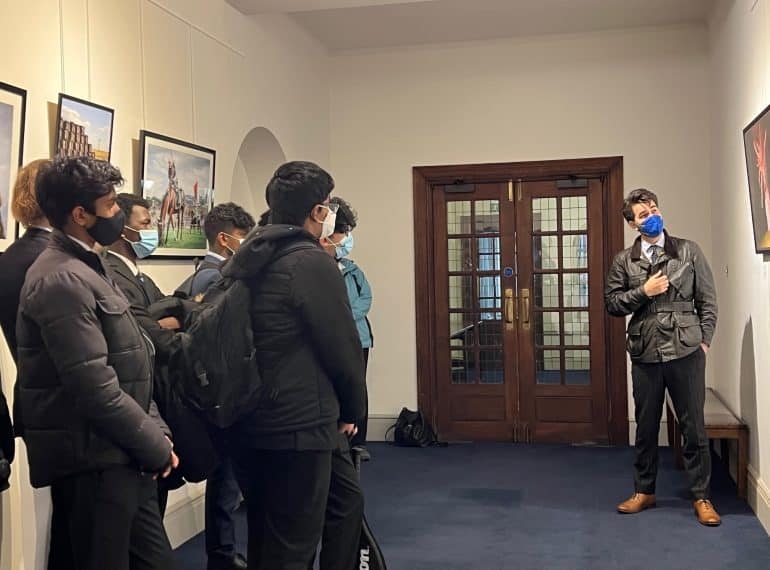
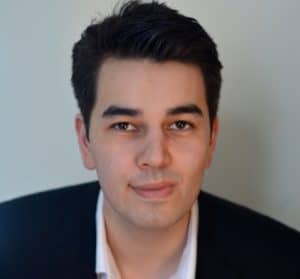 Featuring photography and a number of essays, the exhibition, which marks the tenth anniversary of the nuclear disaster and the earthquake and tsunami that precipitated it, is being held at the Royal Geographical Society in London. The earthquake and tsunami killed more than 15,000 and triggered a triple meltdown at the power station, forcing 200,000 people from their homes.
Featuring photography and a number of essays, the exhibition, which marks the tenth anniversary of the nuclear disaster and the earthquake and tsunami that precipitated it, is being held at the Royal Geographical Society in London. The earthquake and tsunami killed more than 15,000 and triggered a triple meltdown at the power station, forcing 200,000 people from their homes.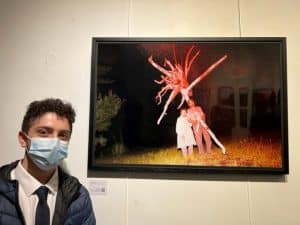 The exhibition, entitled Picturing the Invisible, sees his research interests coming together with his longstanding engagement with the London art scene: while in the Sixth Form at QE, he took part in in the Royal Academy’s attRAct programme and in the Louis Vuitton Young Arts Program; he has also been an Event Manager at the OPEN Ealing community art gallery.
The exhibition, entitled Picturing the Invisible, sees his research interests coming together with his longstanding engagement with the London art scene: while in the Sixth Form at QE, he took part in in the Royal Academy’s attRAct programme and in the Louis Vuitton Young Arts Program; he has also been an Event Manager at the OPEN Ealing community art gallery.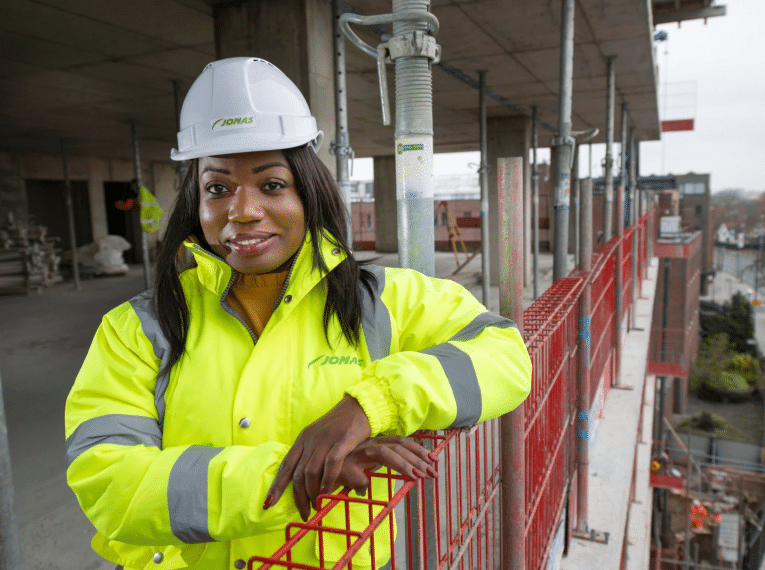
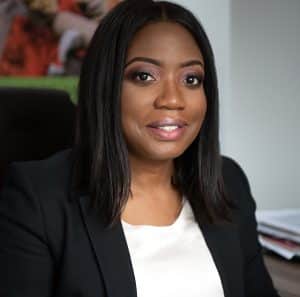 One undoubted highlight was the online assembly given to the Sixth Form by Roni Savage (pictured above) – engineering geologist, founder of a multi-million pound construction industry consultancy, multiple award-winner…and a QE mum.
One undoubted highlight was the online assembly given to the Sixth Form by Roni Savage (pictured above) – engineering geologist, founder of a multi-million pound construction industry consultancy, multiple award-winner…and a QE mum.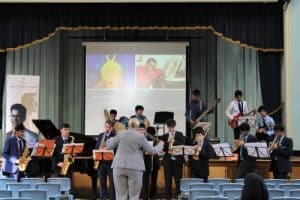 Mrs Savage, whose son, Jayden, is in Year 13, is the founder of Jomas Associates, a large engineering and environmental consultancy, and Policy Chair for Construction within the Federation of Small Businesses. She is a Fellow of both the Royal British Institute of Architects and the Institute of Civil Engineering, and is on the current UK Powerlist of Britain’s most influential people of African/Caribbean heritage.
Mrs Savage, whose son, Jayden, is in Year 13, is the founder of Jomas Associates, a large engineering and environmental consultancy, and Policy Chair for Construction within the Federation of Small Businesses. She is a Fellow of both the Royal British Institute of Architects and the Institute of Civil Engineering, and is on the current UK Powerlist of Britain’s most influential people of African/Caribbean heritage.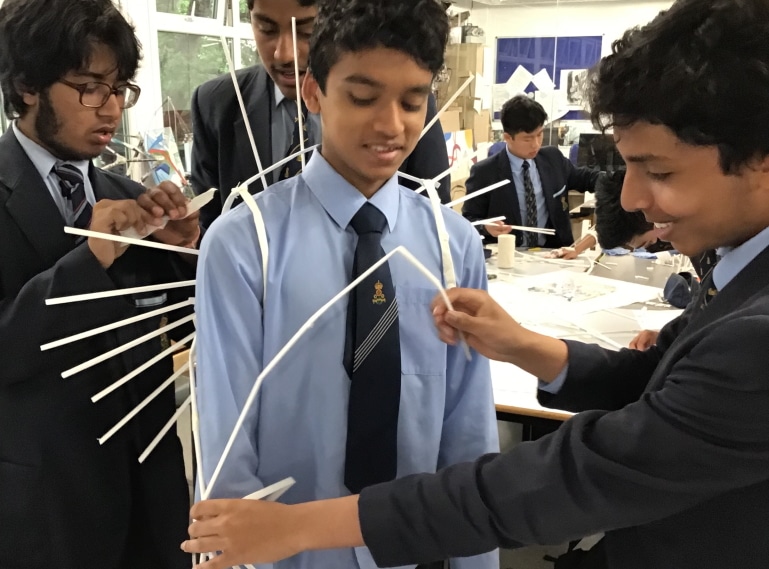
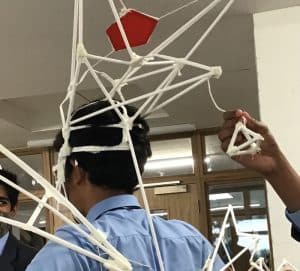 For Year 10, the brief was to work in groups to design and construct ‘wearable architecture’, using 6mm paper tubes.
For Year 10, the brief was to work in groups to design and construct ‘wearable architecture’, using 6mm paper tubes.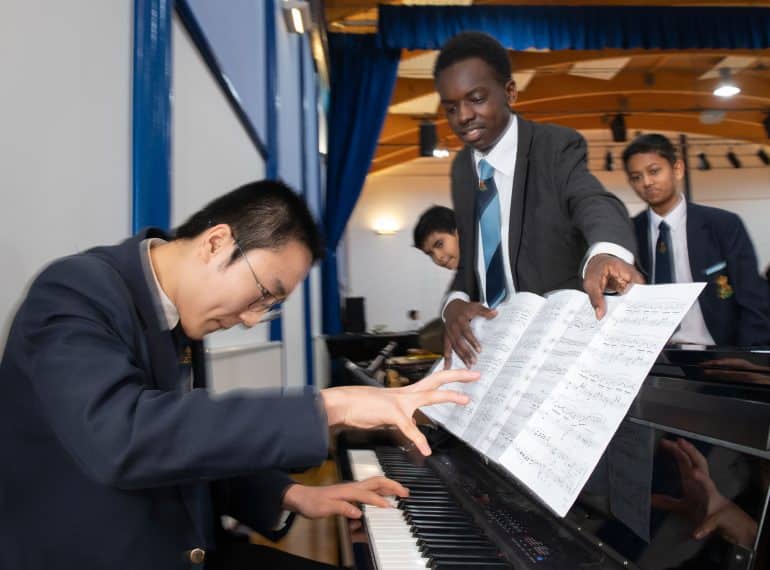
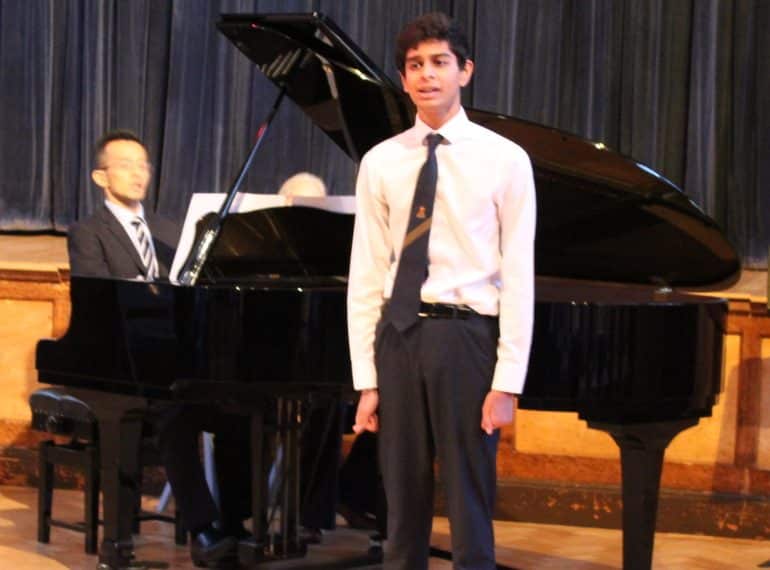
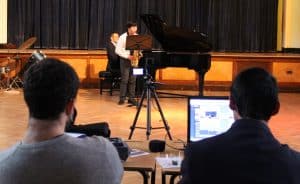 The Senior Chamber Concert featured a restricted audience in the Main School Hall, but was also filmed and broadcast online so that the wider QE community could see it in real time.
The Senior Chamber Concert featured a restricted audience in the Main School Hall, but was also filmed and broadcast online so that the wider QE community could see it in real time.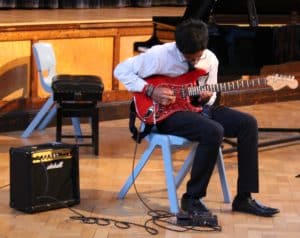 Playing instruments ranging from the electric guitar to the flute, they were drawn from Year 11 and the Sixth Form. The repertoire was similarly diverse, from Beethoven (Year 12 pianist Alex Woodcock performed the Sonata in G Op.14 Allegro) to contemporary American guitarist Steve Vai’s Die to Live (performed on the electric guitar by Kirtinandan Koramutla, of Year 11).
Playing instruments ranging from the electric guitar to the flute, they were drawn from Year 11 and the Sixth Form. The repertoire was similarly diverse, from Beethoven (Year 12 pianist Alex Woodcock performed the Sonata in G Op.14 Allegro) to contemporary American guitarist Steve Vai’s Die to Live (performed on the electric guitar by Kirtinandan Koramutla, of Year 11). Year 12 alto saxophonist Conor Parker-Delves brought the evening to a close with his performance of Pequeña Czarda by Pedro Iturralde, a Spanish saxophonist and composer celebrating his 91st birthday this year, who composed the virtuoso piece in 1949.
Year 12 alto saxophonist Conor Parker-Delves brought the evening to a close with his performance of Pequeña Czarda by Pedro Iturralde, a Spanish saxophonist and composer celebrating his 91st birthday this year, who composed the virtuoso piece in 1949.